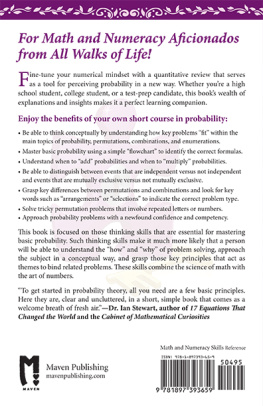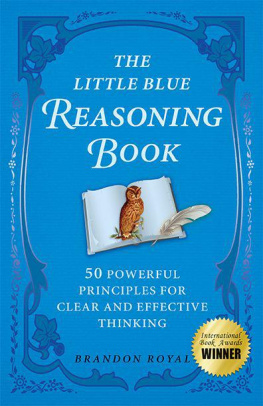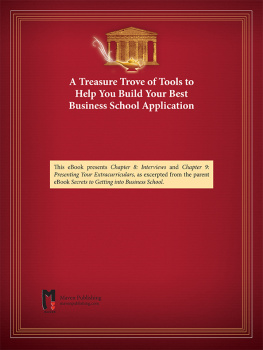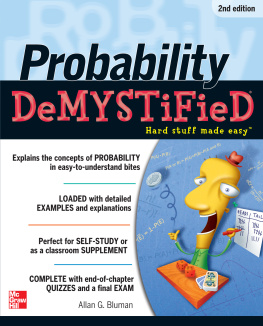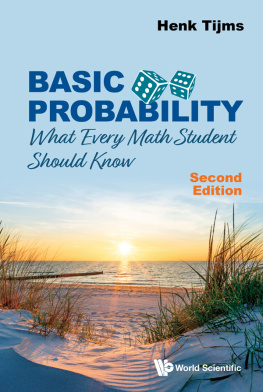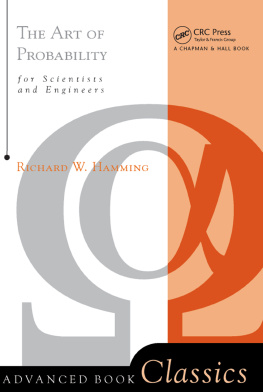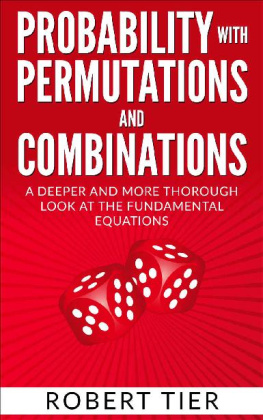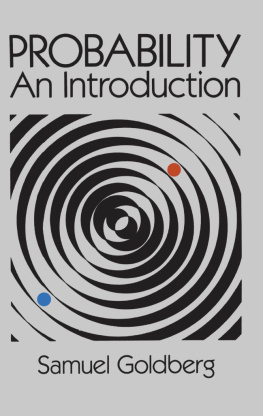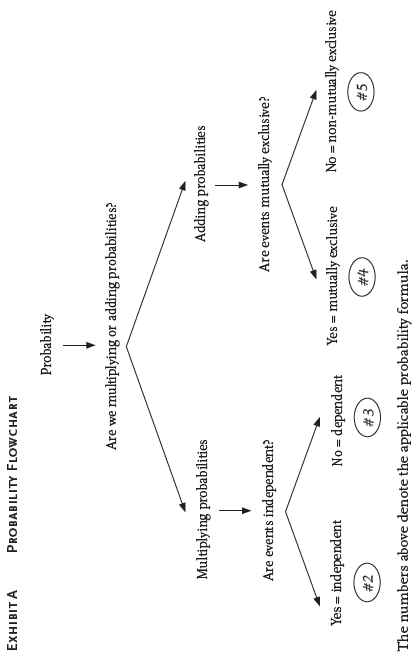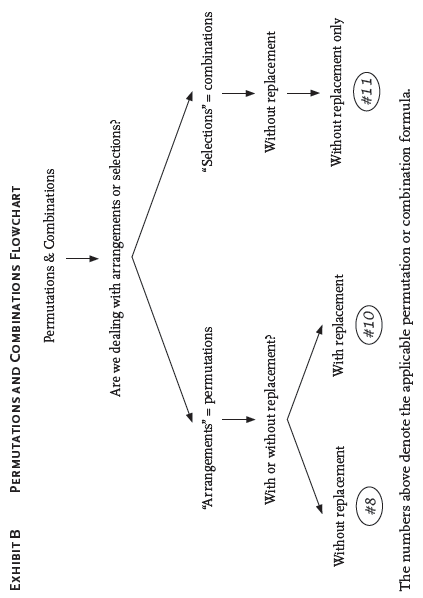Brandon Royal - The Little Purple Probability Book: Mastering the Thinking Skills That Unlock the Secrets of Basic Probability
Here you can read online Brandon Royal - The Little Purple Probability Book: Mastering the Thinking Skills That Unlock the Secrets of Basic Probability full text of the book (entire story) in english for free. Download pdf and epub, get meaning, cover and reviews about this ebook. year: 2013, publisher: Maven Publishing, genre: Children. Description of the work, (preface) as well as reviews are available. Best literature library LitArk.com created for fans of good reading and offers a wide selection of genres:
Romance novel
Science fiction
Adventure
Detective
Science
History
Home and family
Prose
Art
Politics
Computer
Non-fiction
Religion
Business
Children
Humor
Choose a favorite category and find really read worthwhile books. Enjoy immersion in the world of imagination, feel the emotions of the characters or learn something new for yourself, make an fascinating discovery.
- Book:The Little Purple Probability Book: Mastering the Thinking Skills That Unlock the Secrets of Basic Probability
- Author:
- Publisher:Maven Publishing
- Genre:
- Year:2013
- Rating:5 / 5
- Favourites:Add to favourites
- Your mark:
The Little Purple Probability Book: Mastering the Thinking Skills That Unlock the Secrets of Basic Probability: summary, description and annotation
We offer to read an annotation, description, summary or preface (depends on what the author of the book "The Little Purple Probability Book: Mastering the Thinking Skills That Unlock the Secrets of Basic Probability" wrote himself). If you haven't found the necessary information about the book — write in the comments, we will try to find it.
For Math and Numeracy Aficionados from All Walks of Life!
Fine-tune your numerical mindset with a quantitative review that serves as a tool for perceiving probability in a new way. Whether youre a high school student, college student, or a test-prep candidate, this books wealth of explanations and insights makes it a perfect learning companion.
Enjoy the benefits of your own short course in probability:
- Master basic probability using a simple flowchart to identify the correct formulas.
- Understand when to add probabilities and when to multiply probabilities.
- Be able to distinguish between events that are independent versus not independent and events that are mutually exclusive versus not mutually exclusive.
- Grasp key differences between permutations and combinations and look for key words such as arrangements or selections to indicate the correct problem type.
- Solve tricky permutation problems that involve repeated letters or numbers.
- Approach probability problems with a newfound confidence and competency.
This book is focused on those thinking skills that are essential for mastering basic probability. Such thinking skills make it much more likely that a person will be able to understand the how and why of problem solving, approach the subject in a conceptual way, and grasp those key principles that act as themes to bind related problems. These skills combine the science of math with the art of numbers.
To get started in probability theory, all you need are a few basic principles. Here they are, clear and uncluttered, in a short, simple book that comes as a welcome breath of fresh air. Dr. Ian Stewart, author of 17 Equations That Changed the World and the Cabinet of Mathematical Curiosities
Brandon Royal: author's other books
Who wrote The Little Purple Probability Book: Mastering the Thinking Skills That Unlock the Secrets of Basic Probability? Find out the surname, the name of the author of the book and a list of all author's works by series.

